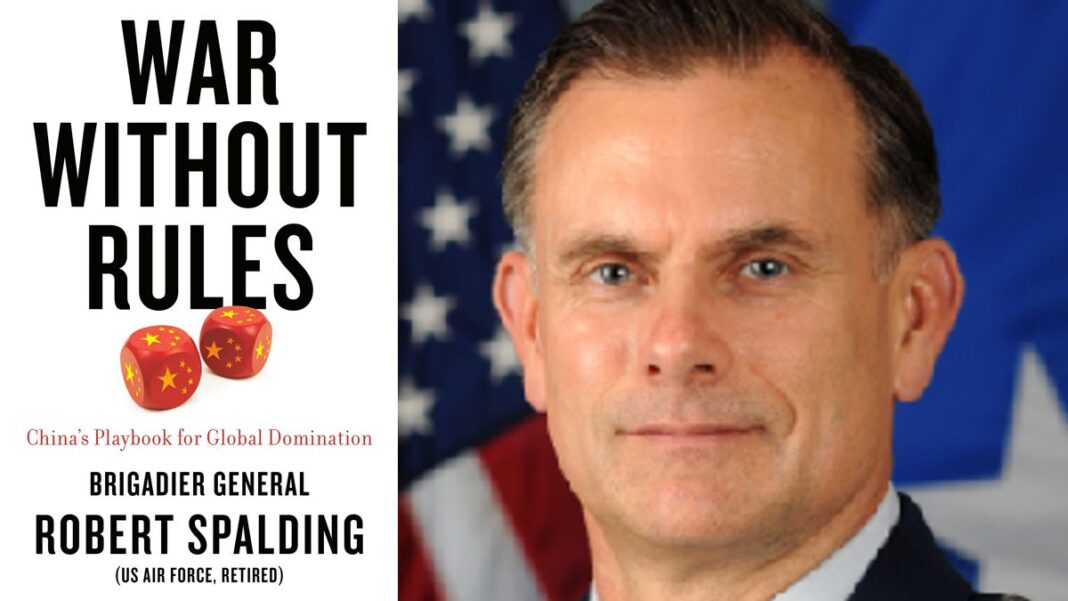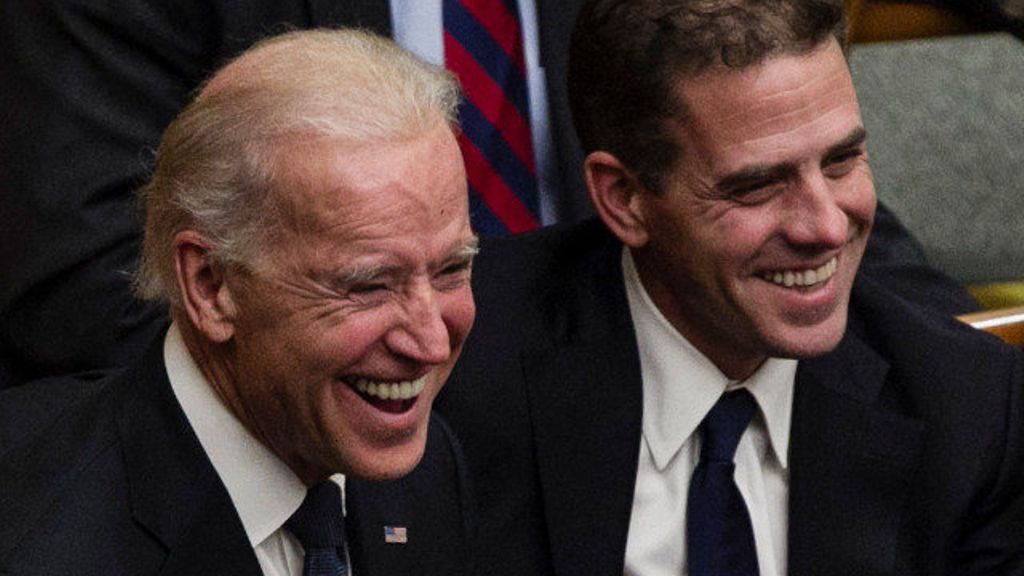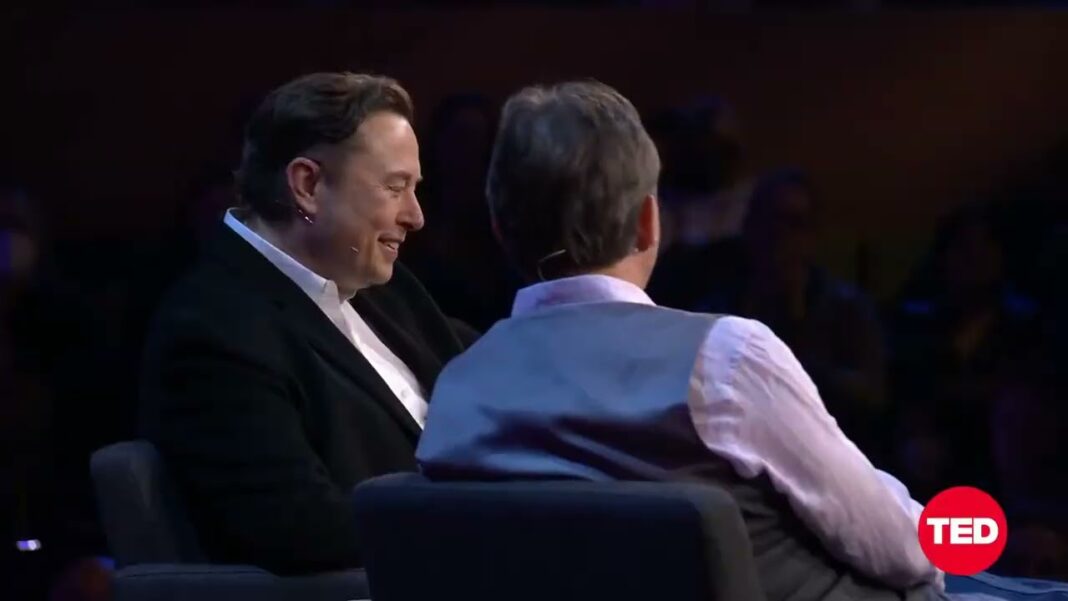In its fight for global dominance, Communist China has thrown out the old rules of war. China expert General Robert Spalding walks us through their new playbook.
Many Americans are finally waking up to the alarming reality of China’s stealth war on the United States and puzzling over how to push back against its insidious infiltration. What few realize is that we have one real advantage in this war: the Chinese Communist Party strategy for total war has been written out in Unrestricted Warfare, the Chinese book, well known there, that has become their new Art of War.
In War Without Rules, retired Air Force Brigadier General Rob Spalding takes Americans inside Unrestricted Warfare. He walks readers through the principles of this book, revealing the Chinese belief that there is no sector of life outside the realm of war. He shows how the CCP itself has promised to use corporate espionage, global pandemics, and trade violations to achieve dominance. Most importantly, he provides insight into how, once Americans are aware of the tactics, we can fight back against CCP’s creeping influence.
More than a vital read for those interested in China, War Without Rules is essential reading for anyone—from policymakers and diplomats to businessmen and investors—finally waking up to the stealth war. Knowledge is power, and it’s time to arm yourself.
About the Author
Robert Spalding retired from the U.S. Air Force as a brigadier general after more than 25 years of service. The author of Stealth War, he is a former China strategist for the chairman of the Joint Chiefs of Staff and the Joint Staff at the Pentagon, as well as a senior defense official and defense attaché to China. He earned his doctorate in economics and mathematics from the University of Missouri and is fluent in Mandarin.

Chapter 1
Know Your Enemy
“To know your enemy, you must become your enemy.” That is from Sun Tzu, the font of much Chinese strategic wisdom. He means: See the situation through your enemy’s eyes. How would he react if the circumstances were reversed? What steps would he take to gain advantage? Where are his weak points? When it came to the outbreak of SARS-CoV-2, not only did we not see the problem through the eyes of China’s Communist leaders, we didn’t even realize they were the enemy.
In January 2020, Americans believed what the Chinese told them-that the virus was under control. Why would they lie about something as serious as a deadly disease? But even as we believed them, the Chinese Communist Party was locking down its own country while allowing international flights out of Wuhan, knowing that Wuhan residents would carry the virus to the rest of the world, perhaps escalating it into a global pandemic. It made the cold-blooded calculation that COVID-19 could actually help China if it weakened the United States and Europe.
The CCP also began a global disinformation campaign, led by their hordes of “50 Cent Army” members. This wasn’t a conventional army-it was a group of social media agents who got paid 50 cents in Chinese renminbi for every post they’d make on Western social media platforms. The disinformation campaign shared positive stories about the CCP’s response to COVID-19, making it seem far more effective than it actually was, while downplaying the severity and contagiousness of the virus. At the same time, Chinese officials refused to tell the World Health Organization about the outbreak for many weeks, in violation of their agreement. Meanwhile, all those international travelers who flew out of Wuhan and other Chinese cities were carrying the virus across Asia, into Europe, and soon after to the United States. And how is it conceivable that China muzzled its doctors and refused to share the genetic sequence and virus samples or allow outside scientists into China to study the origins and formulate treatment-to this day?
Thanks to COVID-19, by late 2020, the world’s major economies would lose an estimated $4 trillion in economic output-and eventually more than five million people would die. In addition to reopening their economy faster than the West, the Chinese owned the means to mass produce many of the goods the West urgently needed, like ventilators and personal protective equipment. They would also gain a propaganda victory as they found yet another reason to point to U.S. failings while falsely praising their own conduct by rewriting and burying history.
For the Chinese leadership, COVID was not a problem, it was an opportunity. It was a weapon to be used to advance the interests of China. Whether or not it was a deliberate or accidental release from the Wuhan lab-we may never know-everything that followed was an orchestrated response that caused havoc for the rest of the world.

If these consequences of the CCP’s actions had been the result of a conventional military attack, America would have surely retaliated. But instead, this kind of stealth war-combining ruthless economic policies, indifference to the public good, and a weaponization of the internet-attracted minimal attention. While conspiracy theorists speculated that the Chinese had designed COVID-19 in a lab as a bioweapon, few Americans discussed the less extreme but proven case: that the CCP took advantage of a surprise crisis to advance its own interests and hurt its adversaries. They had started lying to the public from the moment of Dr. Li Wenliang’s warning, and they’re still lying about Chinese COVID statistics as I write this in late 2021.
Looking back, we can see that the United States ignored that hoary military maxim of know your enemy. How different would the early days of the COVID epidemic have been if we had taken a much harsher view of the Chinese Communist Party and had not been distracted by the false and foolish notion that any criticism of the Chinese government was racist. But we did not understand what our enemy wanted and we did not understand their game.
What China Wants
Knowing the goals and motives of any country is at the foundation of diplomacy and national security-most keenly when you’re talking about a budding superpower with a giant army and nuclear weapons. Fundamentally, you want to know if your adversaries are a threat, and if so, what kind of threat? Are they willing and able to go to war with their neighbors? Do they want territory? Resources? Control over global trade? Is there a scenario in which they would invade the United States? National security analysts, as I once was, look for clues in speeches by party bosses, bread crumbs in academic papers, phrases of military doctrine. Always, we’re standing outside a murky window peering in. Or trying to find a clear window. I think Unrestricted Warfare is that window. Once we establish what the Chinese are up to, UW will help us understand the how and why.
Winston Churchill famously said of Soviet Russia, “It is a riddle wrapped in a mystery inside an enigma.” He was trying to see into the mind of Joseph Stalin and his Communist party henchmen in the Kremlin. American leaders at the height of the Cold War asked a thousand times, “What is Russia up to? What do they want? How dangerous are they?” We eventually figured them out. Thanks to some keen analysis and the fortitude of President Ronald Reagan, we divined that Russia was a hollow country with a fragile economy and a bloated military-a jackbooted clown show plagued by an endless series of economic disasters that ultimately proved communism, and the Communist party, a failure. Reagan’s arms race drove them over the cliff.

It would be a mistake, however, to put China in the same box. Beijing’s motives are much more obscure than Moscow’s, and the biggest error our leaders can make today is thinking they have a simple understanding of what the CCP wants and how it is getting it.
It’s easy to think we have some understanding of our rival. We have, after all, fought bloody battles against the Chinese army during the Korean War. The Chinese have fought shooting wars with India and Vietnam over disputed territory. More recently, because there wasn’t much fear of military action, there has been a general assumption in our diplomatic and military community that China is not a direct threat to the United States. Or, if they are, that we can control them by putting pressure on them in all of the normal ways.
But we can’t rerun the Soviet movie and expect the same outcome. China is a bigger problem. Yes, they made the same colossal economic blunders under Mao-resulting in millions of deaths from starvation. Their ghastly political purges drained its society of its talent before the 1980s. But they survived. Thrived, even. And since then have arguably made few mistakes. Remember that their economy dwarfs Russia’s, as does their population of 1.4 billion people. Their version of communism is much more complex than the Soviet’s, allowing free enterprise with a leash. And the Chinese culture has taken to entrepreneurship in a way that Russia’s has not. China’s military is now formidable. Whether from research and development or theft, they are a technologically advanced nation. Their money has given them far more global entrŽe than the Soviet’s blunt force ever could. They have their problems, which I’ll discuss later. But the big lesson is: China is not Russia 2.0.
So what is China up to? What do they want? And how are they working to get it?
According to too many of our politicians and business leaders, China doesn’t want much, and it isn’t acting against us at all. Conversations on this subject that take place in the Pentagon are usually steered by the view from the top. In some fashion, the views of the president and his most senior advisers and cabinet members set the tone for how the meetings would go. In my tours in both the White House national security staff and the Pentagon, the required view was that if you said China was an enemy, you could be out of a job. Outside the formality of those rooms, my colleagues and I had screaming arguments about exactly that subject.
When I arrived at the Pentagon as the China adviser to the chairman of the Joint Chiefs of Staff in 2014, the instructions from the Obama administration were clear: We were not going to do anything in public to antagonize China as their relationship is too significant financially. The narrative was that the two most powerful countries in the world had to cooperate to solve greater challenges like a nuclear-armed North Korea and climate change. That stance was built on the absurd idea that China wants to fix either of these issues. (It doesn’t.)
Over those years I came to two key realizations. First, the number one goal of the Chinese Communist Party is the survival of the Chinese Communist Party. And second, the number one threat to achieving that goal is American democracy. We may not see them as our enemy, but they surely see us as their enemy. An existential one.

The basis of globalization that was agreed to in the wake of World War II was the principles of the Atlantic Charter, which underlies the United Nations, the World Trade Organization, and other bodies. There are four keys: free markets, democratic principles, rule of law, and self-determination. This is what the global elites who convene in places like Davos believed the Chinese were moving toward. In fact, the exact opposite was true. As we later learned, the Chinese Communist Party regards those exact principles as a fundamental threat to its existence.
The People’s Republic of China has a constitution, but it is superseded by the Communist Party constitution, which makes clear that the sovereign power of China-the ruler-is the party. And the ruler of the party-in theory the Central Committee, but in reality President Xi Jinping-is the ruler of the country. His cadres are the 90 million party members, a privileged class among their 1,350,000,000 other fellow citizens. No surprise, there are many good reasons to keep the party in charge. And to suppress Western ideas.
This was made most clear to me in one of those rare glimpses of internal thinking. Document No. 9 was a party directive to those many local officials that leaked in 2013. At the time, Xi was new to the job and there was great hope in Washington that the tidy, well-dressed gentleman was going to launch the next phase of reform. To those who knew how to read it, Document No. 9 smothered that hope. Issued from the Central Committee, it attacked a growing reform movement and told the local leaders in no uncertain terms that China was a staunchly Communist country and that Western ideals were to be crushed. Forbidden were notions of constitutional democracy, a free press, examinations into China’s troubled history, economic privatization. The reform advocates were subversives whose “goal is to obscure the essential differences between the West’s value system and the value system we advocate, ultimately using the West’s value systems to supplant the core values of Socialism.”
These ideas were threats to be guarded against. And soon after began a series of arrests and detentions of human rights lawyers, academics, and journalists.
In Washington, there was not much concern. The complexity of China’s actions across so many fronts had made it a “Not my job” issue for so many U.S. agencies. What did the Pentagon care about the arrest of journalists in Shenzhen or the infringement of some Silicon Valley company’s patent? What did the Commerce Department care about man-made military islands in the South China Sea? No one was seeing the whole picture.
While America’s leaders had become complacent-reasoning that communism was dead and America ascendant-leaders of the CCP were strategizing how to become the new global superpower by 2049, the one hundredth anniversary of the Communist takeover of China. As far back as the Tiananmen Square protests of 1989, the CCP saw how essential it was to block out the Western concepts of free speech and democracy, even while importing Western capital and technology. Indoctrination and thought control became more important than ever. That’s why all the Chinese actions fit together in a mosaic that would have made Mao proud.

China’s Strategy
It’s not enough to know what your enemy wants. You need to understand his strategy. This is where Americans are really confused. We are primed to fight in one way-all-out war-and see aggression through the same lens. The Chinese are doing something else.
It was some briefings I received from friends in the U.S. corporate community that finally made clear to me the extent of the Chinese invasion. Some smart people with money at stake indeed saw the whole picture. The Chinese were already fighting an “everywhere war,” and the question to ask was, Where was it going next?
They explained how the CCP has been acquiring technology without paying a cent toward developing it, carefully taking control of the world’s shipping businesses, infiltrating our corporations and scientific laboratories, using American investor dollars to finance its factories and companies-and then insisting that any profits stay in China. This is just one example of how China is surreptitiously fighting for world domination-regional and global hegemony in the words of the academics.
Consider some of their other methods:
China has been fighting us in the “free market.” Our political and business elites have failed to realize that the CCP has not played by the rules of international law and the assumptions of the many global organizations into which they have recently been welcomed. They have failed to recognize that the Chinese state and private sector work together to steal intellectual property-theft is not an accident; it’s part of the business model.
They failed to realize that a Westernized China would use its increasingly sophisticated surveillance technology to create a new Orwellian system of “social credit scores” that reward or punish citizens depending on evidence of their dedication to the Communist Party. Our elites assume the military is the main weapon in a war, failing to realize that money is stronger. They’ve not realized that Chinese money was used to sway political leaders in foreign countries, silence ideas, and purchase or steal technology. It was being used to manufacture goods at dirt-cheap prices and drive competitors out of business. It created an army of academics who fanned out to gather or steal scientific, technological, or engineering intelligence.
By infiltrating the web of social media, China has acquired the ability to manipulate and distort all manner of information. Consider these headlines: “China Forces Disney to Make China-Friendly Movies”; “A National Basketball Association Team Almost Fires a Top Executive After He Makes Some Mild Criticism of Forced-Labor Camps in Western China”; “The New York Times Discovers That the CCP Propaganda Machine Has Seeded Social Media with Thousands of Bogus, Mass-Manufactured Videos from Supposed Uyghur Minorities Who Proclaimed How Well Treated They Were.” We are led to think that all the volumes of documentation of the abuse and even genocide of the Muslim Uyghurs was a Western lie!
Excerpt. © Reprinted by permission. All rights reserved









